 Here is another lesson inspiration from the book, "Wow! America!" by Robert Neubecker. A journey across the United States brings us to the great Grand Canyon. Layers of rock, canyons and eroded arches appear endless, broken up only by the slight variations of colors. This lesson focuses on creating depth in a picture. The concept here, near and far can be used or simply the foreground, mid-ground and the background.
Here is another lesson inspiration from the book, "Wow! America!" by Robert Neubecker. A journey across the United States brings us to the great Grand Canyon. Layers of rock, canyons and eroded arches appear endless, broken up only by the slight variations of colors. This lesson focuses on creating depth in a picture. The concept here, near and far can be used or simply the foreground, mid-ground and the background.The results are quite graphic and dramatic--just like the Grand Canyon!
Supplies:
12" x 18" white paper
Pencil and eraser
Water containers and brushes
Tempera Paints: Mix up some desert-like colors in blues, browns, terra-cotta, yellows, etc.
Black tempera paint (watered down) and small tipped paint brush.
Photographs of the Grand Canyon
Neubecker's book, Wow! America!
Drawing the Canyon:
- Starting at the bottom of the page, draw a line that will represent the edge of a cliff. The line should be about a hands-width from the bottom of the page and should contain curved sections and sections that bend in to one another.
- Draw vertical lines where the lines bend in together. This creates the illusion of depth.
- Next, draw the "pancake" like plateaus. It helps to keep the top part of the pancake relatively flat and then round the bottom. Draw as many "pancakes" as you would like.
- Add the vertical lines that will turn the "flying pancakes" into plateaus. Encourage lines that bend slightly.
- Draw a straight horizon line near the top of the drawing. Add rock formations, clouds, the sun, etc.
- Once the canyon is drawn, students can now return to the foreground and add cactus, rocks, etc. Because the students are using pencils, they will have a tendency to draw these items small. Strongly encourage bigger items as this will make the painting easier.
- Erase all unwanted pencil lines. A clean, concise drawing makes painting easier.


Painting the Canyon:
I find it's helpful to paint the canyon in stages. Chose a color for the foreground and paint this area plus all the plateaus this one color. Some kids will find it very hard to stay with one color and I don't force them. Rather I explain that sticking to one color makes it easier for the eye to pick up the plateaus. This is a great lesson for teaching color consistency for better composition.


After the plateaus are painted, paint the sky. Bring out all sorts of paints for this. I set out some blues, whites, pinks and let the students mix and play until they got their own personal sky color.

After the plateaus and sky, it's time to paint the canyon. This is when the painting starts to look chaotic and messy. Students will fuss, balk and complain that they strongly dislike their painting. Encourage persistence! Suggest limiting the canyon colors to 2 or 3 tones and paint with up and down brush strokes instead of back and forth. This will make a big difference.
For the final and most important step, outline all original pencil lines with a small brush dipped in black tempera paint. The lines might be hard to see, so paint where colors meet.
Third and Fourth Grade Results...

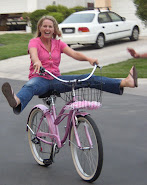


















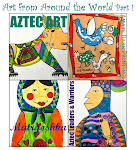
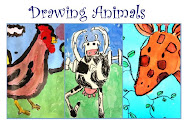
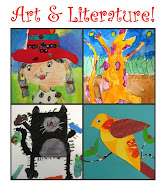


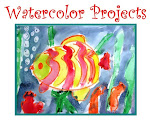





11 comments:
Aloha Deep Space Sparkle Teacher! I have really enjoyed reading your site! I even try a few of the lessons myself! You know...don't we ALL really want to be artists? Thanks for the inspiration!
Keikichinese.blogspot.com
Victoria in Hawaii
Wow! THese turned out great! We may have to try this one.
What a great lesson and the results are beautiful! I'll put in on my lessons-I-want-to-do-list!
These are beautiful! I stayed the night camping at the canyon about 8 years ago and we woke in the morning to the most beautiful colored landscape. These paintings are like slides directly from my memory!
Your site is wonderful! I'll be using your lessons for my three little girls that I'm homeschooling. The eldest is in preschool right now, but she'll soon be ready for some of the kinder lessons, and I'm so excited for her! Our home is going to be filled with the most beautiful child-created art, thanks to you!
These are awesome! We're doing a "Creative Summer Activities" blog hop. Would love for you to link some of your favorites up so we can send some traffic your way!
So, I have not been keeping up with my favorite art teacher blogs. Or my own for that matter- but golly jee, there's something to be said for staying away for a while. What a plethora of inspiration I have waiting to dive into! Thanks for keeping up during the summer. Looking forward to using some of these come the fall.
What a fun painting lesson! I love those canyon colors. Thanks so much, I'll be linking.
I love the idea and tried it with my daughter who is 11. We just visited the canyon in June so I thought it would be a great way to create and share a memory. Funny thing is, she looked at the lesson and paintings and said " the lines of color should be horizontal, not vertical, then she brought up our photos and I'll be darned if she wasn't right. She also said that suguaro castus don't grow in the canyon because of the elevation. Again she was right. We did the lesson as you wrote it, but made our bands of color horizontal and left out the cactus. Don't you hate it when the kids are smarter than we are.
Love your ideas, please keep them coming! They are fantastic.
These are just beautiful and they look soooo easy to do! I love it!
I really like your idea of this painting about the Grand Canyon. Thank you for providing the information about the winding and curved perspective for the rocky ledges. This is a lesson I'd love to try in my classroom if we cover the topic of American landmarks. Thank you for posting it on your blog.
LOVE, LOVE, LOVE this! I'm always looking for great painting lessons like this!!
Post a Comment